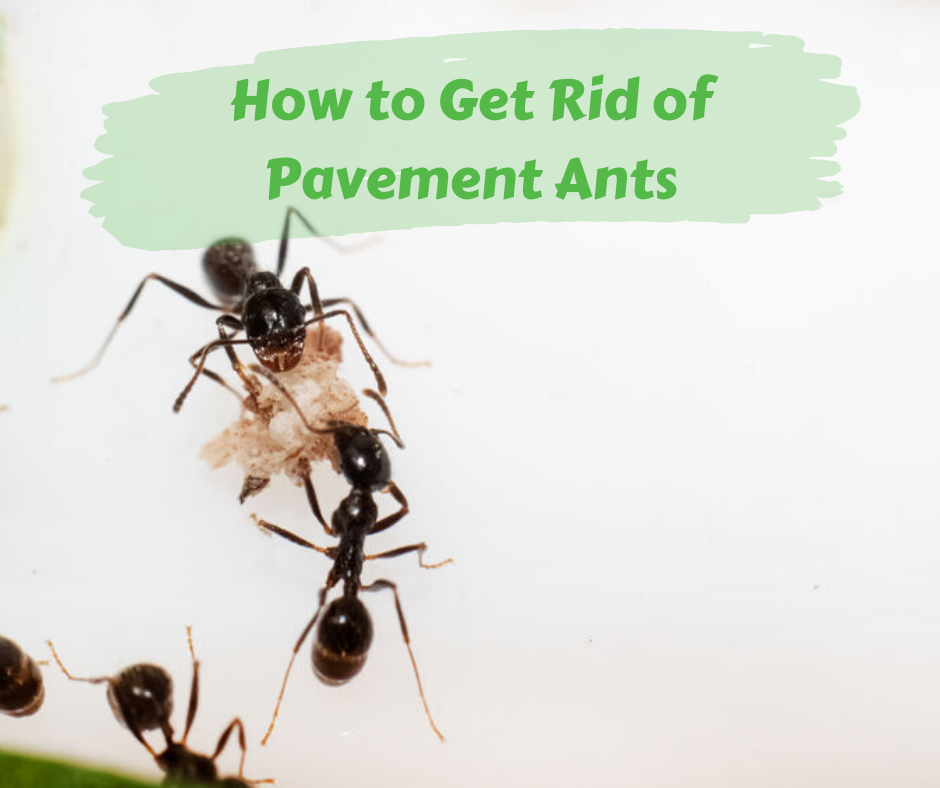
How to Get Rid of Pavement Ants: Step One
The first step in getting rid of pavement ants is to identify them. These dark brown to black-colored ants are native to Europe but are also common in all fifty states. They multiply rapidly and although they do love to create colonies in paved areas, as their name suggests, they will also build colonies in other places – under logs or boards, in woodpiles, and around building foundations, inside wall voids, and under floors are all sites where these ants are commonly found. The workers which create trails back and forth to the colony are about 1/8th inch long, and none of them will have wings. You’ll notice them marching in long lines, with trails extending for as far as 30 feet from nest sites.
One of the best ways to tell pavement ants from other similar-looking species is to pay attention to what the ants are eating. Ants that are consuming sugars only and leaving greasy items behind are probably not pavement ants; this species is not terribly picky about its diet and will eat just about anything.
Step Two:
The second step in eliminating pavement ants is to determine where they are coming from and to attempt to find their nest site. Just watch the ants to see where they’re entering your home. Unless they are nesting inside a foundation, in a wall, or in a floor void, you’re likely to see the line of ants entering your home from outside.
Step Three:
Once you’ve identified the ants and determined how they are getting in, it’s time to create an action plan for keeping the ants from getting into your space. Many people who are curious about how to get rid of pavement ants simply start using insecticide on ants they see, but this isn’t the best approach to use.
Instead, follow these steps to keep ants out:
- Seal the crack or cracks the ants are using to get into the house. A clear silicone sealant usually works very well for this.
- Look for additional cracks that could be used as entry points. Seal them up, as well.
- Look for any leaking water or areas with poor drainage. If you find any problems, plan to fix them as soon as possible so that new cracks won’t form.
Step Four:
Finally, it’s time to eliminate the ants themselves. There are a number of different insecticides on the market, each with varying intensity and a different method of application. There are also some non-insecticides you can use in the fight against pavement ants:
- Liquid insecticides – There are liquid insecticides which are rated for indoor use as well as some that are rated for outdoor use only. If you choose to use one of these products, be sure to choose one that is rated for pavement ants and ensure you follow the product’s instructions. Do not use outdoor insecticides indoors.
- Powdered or granulated insecticides – Some chemical insecticides come in powder form. If you prefer to use these, look for one that will suit your needs, either indoors or outdoors. Powdered and granulated insecticides are best for sweeping into cracks and crevices, and for creating barriers that can prevent ants from re-entering a structure. If you choose to create a barrier, you will need to re-apply it until you no longer notice ants attempting to use old trails to enter your space.
- Poisonous baits – You can use poisonous baits either inside or outside a structure – again, be certain these are rated for pavement ants and be sure that they’re designed to be set up in specific places. Outdoor baits often come with stakes that will keep them in place during windy or wet weather; be sure to replace them as directed on package instructions.
How to Get Rid of Pavement Ants without Using Insecticide
Many people who want to know how get rid of pavement ants would rather not use insecticide, particularly if children or pets are present. There are a few methods which are particularly effective, and as long as you are persistent, you can use them to wage war on pavement ants.
- Boiling water – Locate the nest, and pour boiling water down into it. Add dish-washing liquid or salt to the boiling water to make it even more effective. If you have favorite plants near the nest, try to protect them from contact with the water as it will kill them.
- Borax – Borax is a naturally occurring element that contains boric acid, which is toxic to pavement ants. You can sprinkle borax all around the ants’ nest and around your home to help safeguard against re-entry, but you’ll need to keep applying it frequently as it does take time to work.
- Diatomaceous Earth – Food-grade diatomaceous earth is safe for use around children and pets. To use it, simply spread a ½-inch thick layer onto the ground around the ants’ nest and around the areas where you’ve noticed the ants traveling. This material degrades the ants’ bodies and kills them fairly rapidly.
Now that you know how to get rid of pavement ants using several methods, it’s time to get started. Be sure to analyze the infestation and create a plan before taking action, and then start setting your plan in motion. Be aggressive and keep a close eye on the ant population; with only a small daily effort on your part, you can quickly and easily eliminate invasive pavement ants for good.
